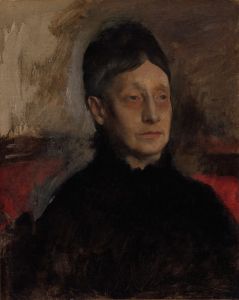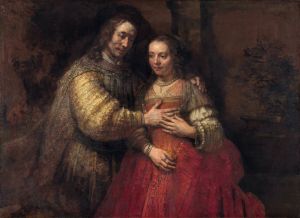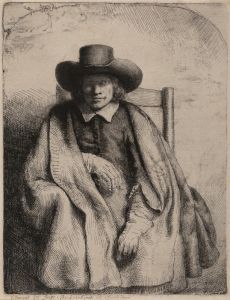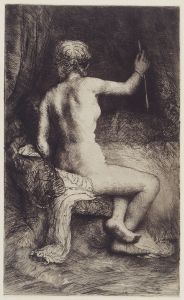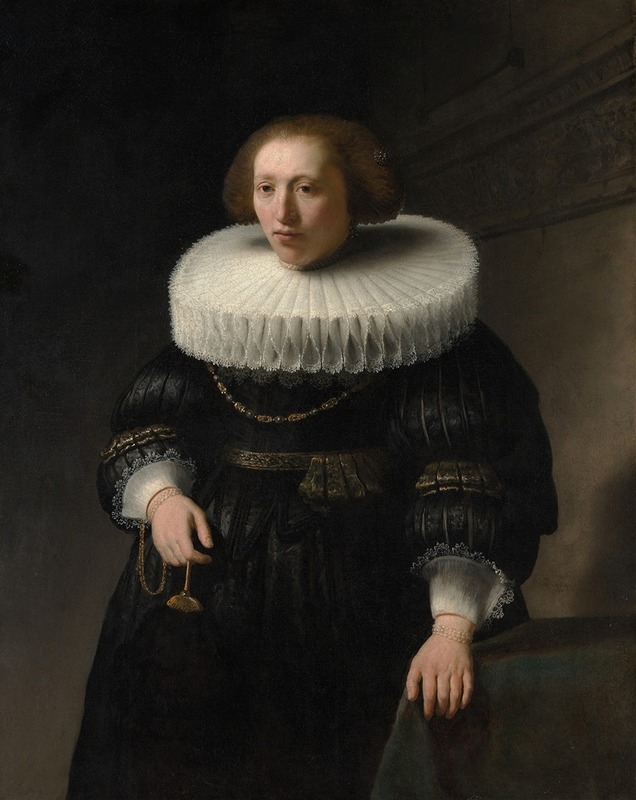
Portrait of a Woman
A hand-painted replica of Rembrandt van Rijn’s masterpiece Portrait of a Woman, meticulously crafted by professional artists to capture the true essence of the original. Each piece is created with museum-quality canvas and rare mineral pigments, carefully painted by experienced artists with delicate brushstrokes and rich, layered colors to perfectly recreate the texture of the original artwork. Unlike machine-printed reproductions, this hand-painted version brings the painting to life, infused with the artist’s emotions and skill in every stroke. Whether for personal collection or home decoration, it instantly elevates the artistic atmosphere of any space.
"Portrait of a Woman" is an oil painting by the renowned Dutch artist Rembrandt van Rijn. Created in 1633, this work exemplifies Rembrandt's mastery in portraiture, showcasing his ability to capture the essence and character of his subjects with remarkable detail and emotional depth.
The painting depicts an unidentified woman, dressed in the fashion typical of the Dutch Golden Age. She is adorned in a dark, modest dress with a broad, white lace collar and a matching lace cap, which were indicative of her social status and the period's style. The woman's attire and the lack of extravagant accessories suggest that she might belong to the middle or upper-middle class, reflecting the societal norms and values of 17th-century Dutch society.
Rembrandt's use of light and shadow, a technique known as chiaroscuro, is particularly evident in this portrait. The light source illuminates the woman's face and upper body, creating a striking contrast with the darker background. This technique not only enhances the three-dimensionality of the figure but also draws the viewer's attention to her facial features and expression. The subtle play of light and shadow on her face reveals a sense of introspection and calmness, characteristic of Rembrandt's ability to convey psychological depth.
The background of the painting is kept simple and dark, which was a common practice in Rembrandt's portraits. This approach ensures that the viewer's focus remains on the subject, allowing her personality and presence to dominate the composition. The dark background also serves to highlight the intricate details of the woman's attire and the delicate rendering of her facial features.
Rembrandt's skillful brushwork is evident in the texture of the woman's skin, the softness of her lace collar, and the fine details of her hair and cap. The artist's ability to depict different textures with such precision is a testament to his technical prowess and keen observation.
"Portrait of a Woman" is part of a larger body of work that Rembrandt produced during his early years in Amsterdam, a period marked by significant artistic growth and experimentation. During this time, Rembrandt established himself as one of the leading portrait painters in the city, attracting a wide range of patrons from various social strata.
The painting is currently housed in the Metropolitan Museum of Art in New York City, where it is part of the museum's extensive collection of European paintings. It remains a significant example of Rembrandt's portraiture, admired for its technical excellence and the artist's ability to capture the human spirit.
In summary, "Portrait of a Woman" by Rembrandt van Rijn is a masterful example of 17th-century Dutch portraiture. The painting's use of light and shadow, attention to detail, and psychological depth are hallmarks of Rembrandt's style, making it a valuable piece in the study of his oeuvre and the broader context of art history.







